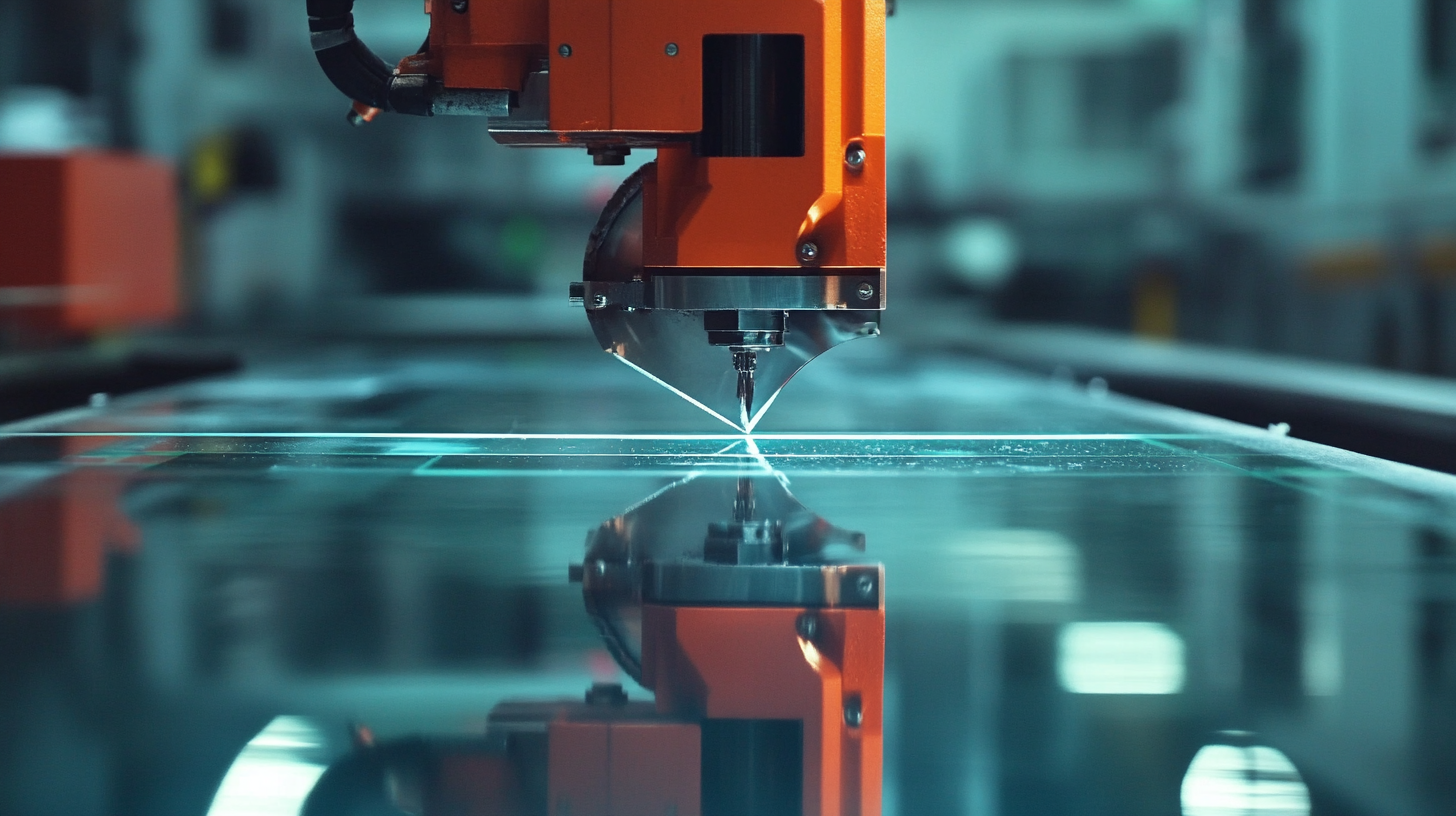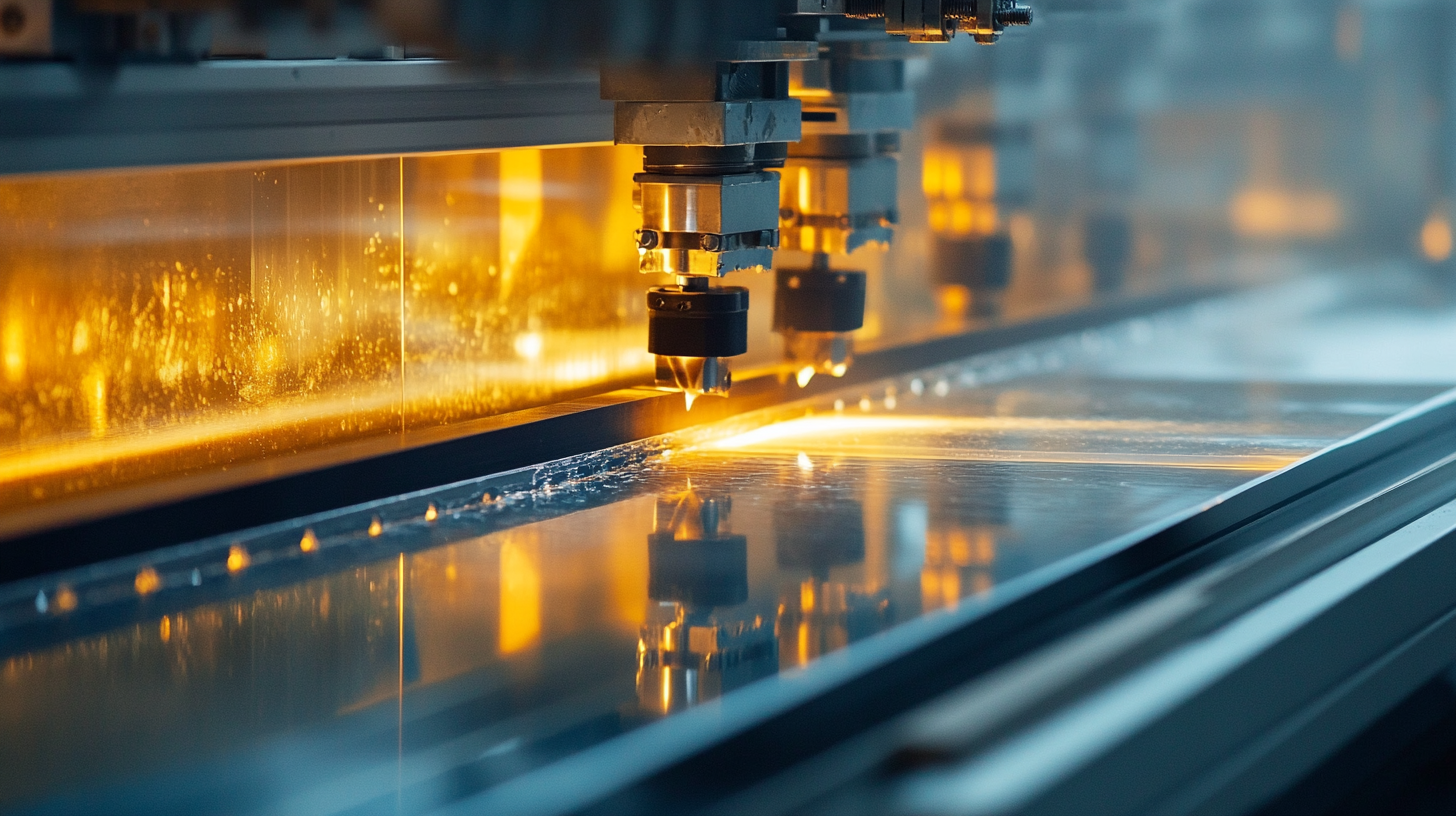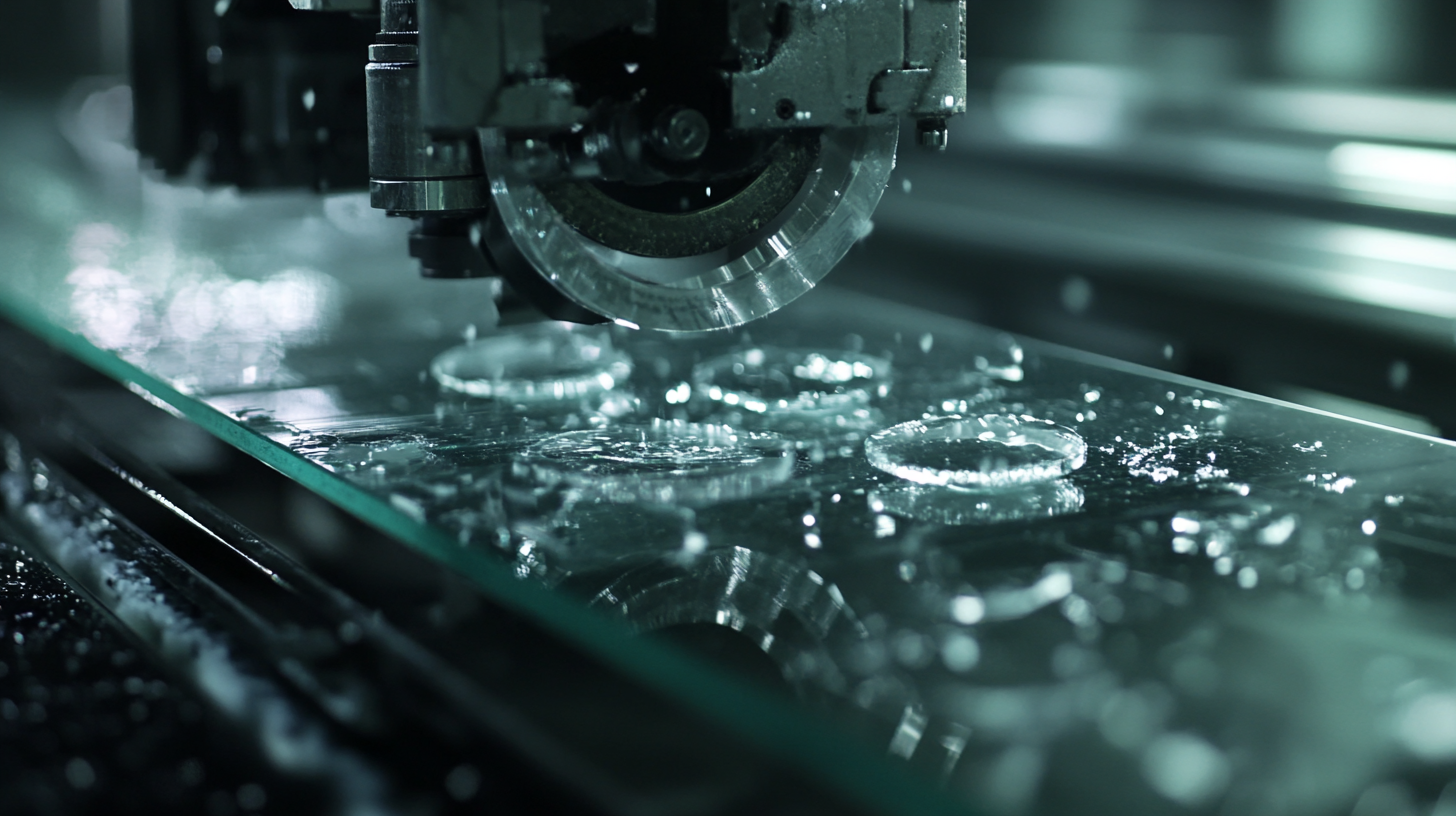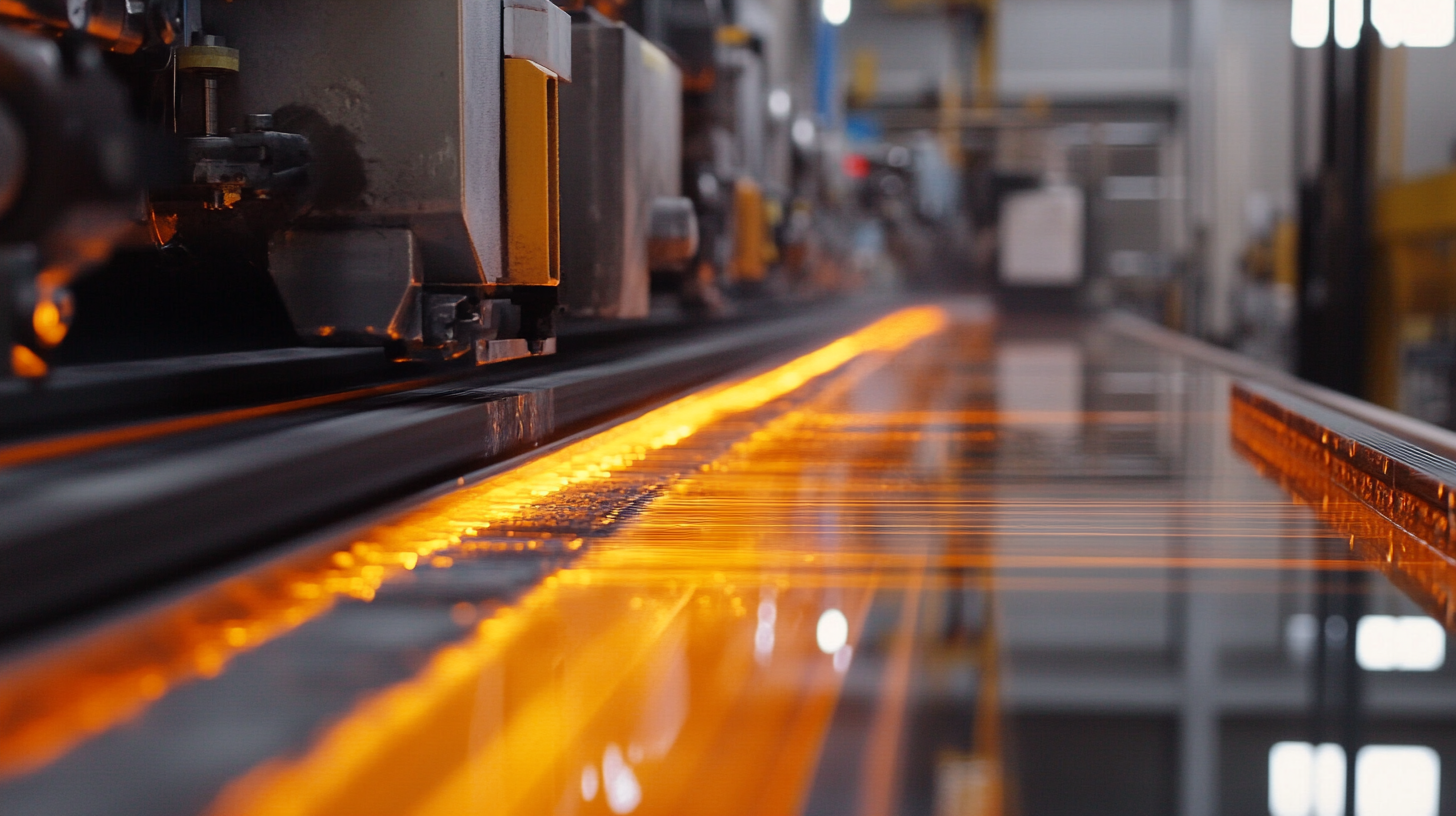Transforming the Glass Industry: How Glass Edging Machinery Enhances Precision and Efficiency
To build the cutting-edge innovation faster than the competition on the other side, precision and efficiency are very important for manufacturers in the glass industry these days. One of such very important innovations that were born was Glass Edging Machinery. By improving the aesthetics of the glass products, this technology greatly enhances consistency and accuracy of edges needed in various applications from architecture to detailed works of art. In elevating the market demands of high quality and fast turnaround times, this advanced machinery will never be forgotten in the transformation of the old glass processing methods.
Glass Edging Machinery opens a new horizon in terms of manufacturing capabilities, enabling companies to streamline their operational workflows. These machines cut operational time on manual labor associated with edging and minimize waste and defects by automating the edging process. As manufacturers adopt this technology, they now gain the ability to customize and develop innovative designs to their product range, which positively influences customer satisfaction. This blog aims to examine how Glass Edging Machinery is creating a new face for the entire glass industry, highlighting some of its advantages and what the future holds for glass production.

The Evolution of Glass Edging Machinery: A Historical Perspective and Current Trends
Erudition is glass industry have evolved remarkably for a long period and one significant area has been in glass edging machinery. For a period going back, glass edging processing would involve mainly manual labor, thus producing glass edges whose quality was not always spectacular and wasted a lot of processing materials. However, with changing eras, the industry kept abreast with technology and moved toward high automation along with an improved precision facet. According to a Market Research Future report, the worldwide glass processing machinery market expects USD 2.4 billion by 2025 and will achieve a CAGR of 6.1% from 2019. Much of that growth will come from new edging machines that improve production efficiency and quality.
All indications point toward a tremendous change towards the so-called smart glass edging. The present machinery gets equipped with programmable logic controllers (PLC) and relatively superior software, optimizing the finishing of the glass edges manufactured by the manufacturer. For example, according to a Technavio report, "Automation in glass processing cuts operational cost by as much as 30% while raising output." Apart from improving the finish quality of edge, monitoring, and adjustment in real time, the ultimate is reduced downtime.
Equally important is the increasing role played by sustainability in the glass industry. Adoption of energy-efficient machines for edging glass has resulted in a significant fall in energy consumed since some of those machines report more than 40 falls compared to their predecessors. As more manufacturers engage in environment-friendly practices, the trend for such innovative glass edging becomes quite high as seen by the commitment in that industry to both precision and sustainability.

Impact of Precision Glass Edging on Product Quality and Market Demand Statistics
The precision glass edging process has gained increased significance for product quality and market parameters in an era of quick change in the glass industry. Increasing demand in high-performance glass components requires manufacturers to invest increasingly in glass edging machinery with performance and efficiency to match the precision and requirements of the final products with the exacting demands imposed by modern industries like electronics and aerospace.
New advances show that precision glass edging gives support to contemporary manufacturing processes nowadays. A case in point is in Shanghai, where a firm is filling gaps in domestic production capabilities using meticulous craftsmanship, thereby contributing to the precision manufacturing picture. Optical quartz glass used for photolithography equipment denotes this trend, where the quality of glass components impinges directly on the performance of primary machinery for chip production. With the increasing popularity of edging processes of good quality, we can thus expect a enormous market demand for precision-engineered glass products to demonstrate their importance in advanced technologies.
In all, the entire specter of advanced glass edging machinery will not only make sure a higher market quality of the product but will also-influence market trends across several industries. The manufacturers who direct their concentration toward precision in their glass components will become leaders in the field and will be driving the innovation and new norms for the industry.

Efficiency Gains in Glass Production: Analyzing Machinery Performance Metrics
The glass-manufacturing industry has experienced significant advances over the last few years. One of these advances is the sophistication of glass edging machinery, which increases precision and efficiency during glass processing. Such machines perform an essential part in the glass industry, giving more precise cuts and finishes to meet the stringent criterion of many industries including the rapidly growing photovoltaic (PV) sector. Because the PV industry intends to enhance the performance of solar panels, the importance of first-rate glass products is increased.
Glass production efficiency gains will rely mostly on the performance metrics of these edging machines. Considering cutting speed, energy consumption, and precision level potential enables manufacturers to improve their operations much further in order to achieve greater throughput with less waste. Naturally, the burgeoning solar energy market is the most important context of this proposition, with innovations such as the 2T perovskite/silicon tandem products emerging. In essence, such advancements stipulate that the glass for solar applications will be of specific quality standards and produced under efficient as well as sustainable practices.
Moreover, with the global sustainability agenda, it is fast moving towards modernization by evolving machinery in the glass industry to make production processes more efficient and environmentally friendly. Integration of smart technology into glass production lines enables real-time monitoring and adjustment in process operations, resulting in noticeable improvements in productivity and quality. Such competition will come to define the glass market, making the collection of these kinds of performance metrics critical for companies hoping to survive and remain viable in the game of modern precision and efficiency.

The Role of Automation in Modern Glass Edging Processes and Productivity
The glass industry is undergoing a revolutionary phase owing to the infusion of mechanization in the glass edging processes. Automation is the key factor that enhances productivity, lowers labor costs, and enriches precision. As per a report from MarketsandMarkets, the global glass processing machinery market is expected to grow from USD 3.4 billion in 2020 to USD 4.6 billion at a CAGR of 6.3% during 2020-2025, thus indicating that the demand for automated solutions in this sector is rising.
The modern glass edging machines use CNC (Computer Numerical Control) systems and robotics to vastly improve the accuracy of edge finishing processes. Such automation is critical in applications where glass components must meet stringent quality standards, such as architectural applications and high-performance appliances. A report by ResearchAndMarkets claims that automation can increase production efficiency by about 30%, while also reducing human error and waste.
Moreover, the introduction of smart machinery has transformed the operational workflows. With real-time monitoring and predictive maintenance, manufacturers now have the tools to optimize performance while reducing downtime. A report by Technavio suggests that companies adopting automated glass edging technologies enhance throughput levels between 20 and 40%, thus improving overall competitiveness in the market. With the increasing adoption of automation in the glass industry, automation-focused companies have a clear edge because they will be able to manufacture better-quality products while enhancing operational efficiency.
Sustainability and Waste Reduction in the Glass Industry Through Advanced Edging Techniques
The glass industry is very much focused on sustainability and reducing waste in recent years with new inductees such as advanced edging techniques. According to Smithers' report, approximately about 6-10% of glass is wasted through edging and finishing processes during production. This means not just additional cost for the material but also a deep concern for the environment. Advanced glass edging machinery has emerged as the game-changing solution to those problems, enabling some precision enhancement while reducing waste.
Modern glass edging machines rely on sophisticated technologies such as CNC (Computer Numerical Control) systems to realize faster and more accurate operations. Frost & Sullivan study points out that 30% less glass is being wasted due to such machines, leaving a profound footprint on operational cost and environmental friendliness. Furthermore, these machines are designed to utilize the lowest energy consumption, in line with sustainability initiatives for the industry.
Beyond the reduced levels of waste, this transition to more advanced approaches honors the increasing worldwide trends toward greater accountability for resource use in manufacturing. From 2020 to 2025, the Global Sustainability Initiative (GSI) has forecasted a 5% compound annual growth rate (CAGR) for demand for sustainable manufacturing technologies in the glass sector. This shows that more manufacturers have realized that investing in cutting-edge edging machinery makes good business sense and is part of creating a sustainable future. And with that, as more companies embrace environmental responsibility, glass edging machinery becomes a necessary area to cut down waste and offer more efficiencies in the further glass environment.

Home
About Us
Products
UPVC PVC Window Machine
Aluminum Window Machine
Glass Cutting Machine
Glass Edging Machine
Insulating Glass Machine
Glass lifting machine
Glass Washing Machine
Glass Laminating Machine
Glass Sandblasting Machine
Glass Drilling Machine
CNC Glass Working Center
CNC Non-Metal Cutting Machine
The Other Glass Machinery
Application
Download
News
Contact Us



